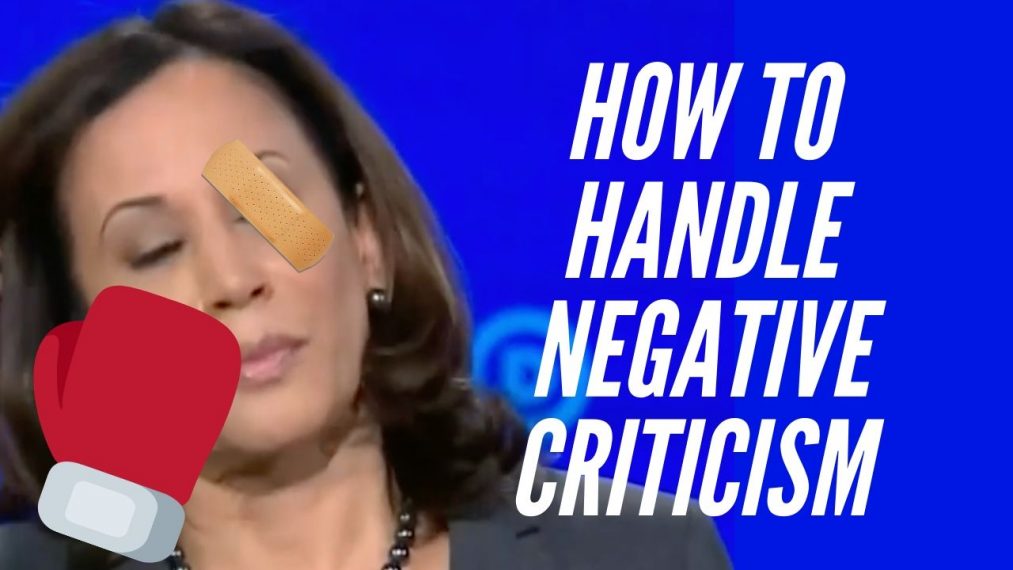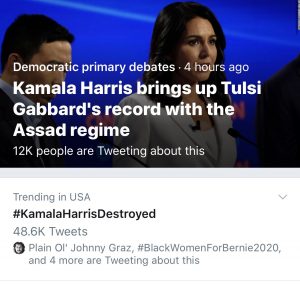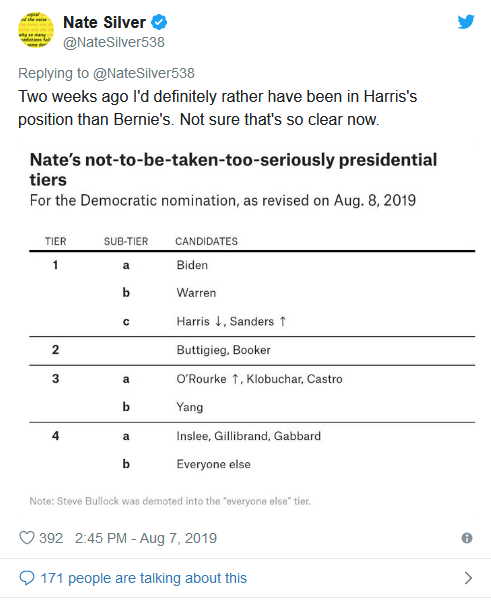How To Respond To Negative Criticism: Kamala Harris & Tulsi Gabbard Showdown
By Min Liu | Verbal Skills
By Min Liu | Verbal Skills

In the recent 2019 Democratic presidential debate, US Senator Kamala Harris suffered a verbal beating from US Congresswoman Tulsi Gabbard which left Harris momentarily stunned and speechless.
Harris, being the experienced lawyer and senator she is, composed herself well and then tried to defend herself and her record.
She didn’t fall apart, and she tried to hit Gabbard back, but she also didn’t come up with a powerful response.
She did okay, not terrible, but certainly not great.
But, the damage was done.
The next morning, the #1 trending hashtag on Twitter was #kamalaharrisdestroyed.

And, many people learned who Tulsi Gabbard was that evening.
(I had no idea who she was.)
Before you read on, please note the following:
This is not a political article. I repeat, this is not a political article.
Please do not read further if you are wanting to engage in a political debate. This article is merely about verbal self defense and does not take sides.
This incident is merely an opportunity for us to talk about and learn how to defend oneself from verbal attacks, especially from negative criticisms about the things we’ve done (or haven’t done).
Inevitably, at some point in our lives (or at many points), we will get criticized by others, so it is important to learn how to verbally defend oneself in these sticky situations.
We won’t all be in televised debates, but a more realistic example is being in a performance review with your boss where he/she gives you some negative criticism.
So, let’s watch what happened at the presidential debate and how Harris responded:
So, how do you think Harris did?
IMO, she did okay. Again, not terrible, but also not great.
She composed herself even after getting attacked viciously. Staying calm and collected is absolutely crucial.
She wasn’t defensive, meaning she didn’t try to justify or explain her past actions. Avoiding defensiveness is also crucial.
And, she also tried to fire back at Gabbard, which was more than called for given Gabbard’s attack on her.
Harris’s offensive move was more of a love tap though than a knockout punch, where she accused Gabbard of “giving speeches”.
Obviously, this wasn’t much of a powerful (or even negative) accusation at all.
(Giving speeches. Isn’t that what all politicians do?!)
But, the thing where I felt Harris didn’t do well in, when she really had to, was minimizing the negative criticisms that Gabbard made.
At a minimum, she needed to put those negative criticisms in a more positive light. But, she didn’t really do that whatsoever.
Which is why at the end of the day, and continuing until the next morning, the general perception was that Harris got “destroyed”.
So, let’s talk about the different approaches Kamala could have taken to respond to Gabbard’s verbal attack.
Generally speaking, there are four choices here (click play below if you want to watch the entire video):
The first approach is called “tit for tat”.
You hit me, I hit you back.
Essentially, you call me unethical, and I turn around say you’re a “liar liar pants on fire”.
The second is the “high road”.
You don’t hit back at the other person, but you do seek reframe the negative criticisms in a more positive light.
The third is a hybrid approach and it’s basically doing both of the first two.
You hit back at the other person and you look to reframe the negative criticisms in a more positive light.
Harris seemed to take this third approach, although since her response was a bit rambling and disorganized, it’s not completely clear to me which apporach she was taking
And, the fourth approach is to look to reframe not the negative criticisms, but the entire question or issue involved.
This is the most advanced approach.
It is to look for some larger issue or question that should have been asked instead. This is what I mean by “meta”.
This approach implies that the person making the criticism isn’t even asking the right questions.
Keep in mind that you can also respond with a combination of any of these approaches.
Using the debate and the specific situation where Kamala was attacked by Gabbard, let’s see how these four approaches might look like in actual words:
“Yes, all of these things happened. You talk about ‘disproportionate impact’, but the only thing that’s disproportionate is the size of your nose, Congresswoman.” It can hardly fit in this auditorium after that mouthful.”
“Yes, all of these things happened. There are always hard choices to make when you are attorney general. If I make a decision one way, there are consequences, sometimes unpalatable to some people. And if I made it the other way, there are other consequences, also equally palatable to another group of people.”
“Yes, all these things happened…BUT…not in the way you make it sound. If you had bothered to research them objectively and completely, you would have realized the issues and deliberations involved were a lot more complicated than how you presented it. But, you didn’t and not only that, you mis-characterized every single incident.”
“Yes, all these things happened. But, when it comes to questions of criminal justice, they’re a lot more complex than a simple soundbite like the one you just gave can convey. You say this is about ethics in how we treat criminals, but this is about much more than that. Let’s be very clear who the real victims are here. You are trying to somehow make criminals into victims, but the real victims are the ones who they hurt.”
So, those are examples of the four approaches one could take to defend yourself from negative criticism.
You’re asking yourself this now:
Of the four approaches, which one is the best approach?
Let’s start with this:
There isn’t necessarily any one right way to respond.
The “best” way, and I put that in quotes, depends highly on the context.
In this particular context, i.e. US presidential debate, tit for tat isn’t completely appropriate. She needs to address the negative criticisms somehow, but this approach doesn’t take that into account.
And, the high road approach would make her seem a bit weak and she would give up her opportunity to hit Gabbard back at least a little.
Like I said above, I think Kamala took the “hybrid approach”. I would say this was an appropriate approach. It’s just that her execution wasn’t great.
The other good approach in this context would be the meta approach or mixing the meta approach with a little tit for tat, just to get Gabbard back a little bit.
Now, turning to a different context than the debates:
If you received negative criticism, let’s say in a performance review with your boss, then tit for tat or the hybrid approach (where you would engage in some tit for ta) wouldn’t be appropriate and somewhat suicidal!
You might consider the “meta” approach or the “high road” approach.
So, again, it all depends on context.
I hope that was helpful. Next time you get some negative criticism, remember it’s all about context!
POSTMORTEM: In case you question whether handling negative criticism is important (or not), on August 8th 2019, one week after the debate, the headline in the political news was “Kamala Harris took the biggest hit in polls after the second Democratic debates.”
And, here was Nate Silver’s prediction as of the same time:

If you liked this article, please share it, comment below, and check out my verbal self defense courses HERE.
